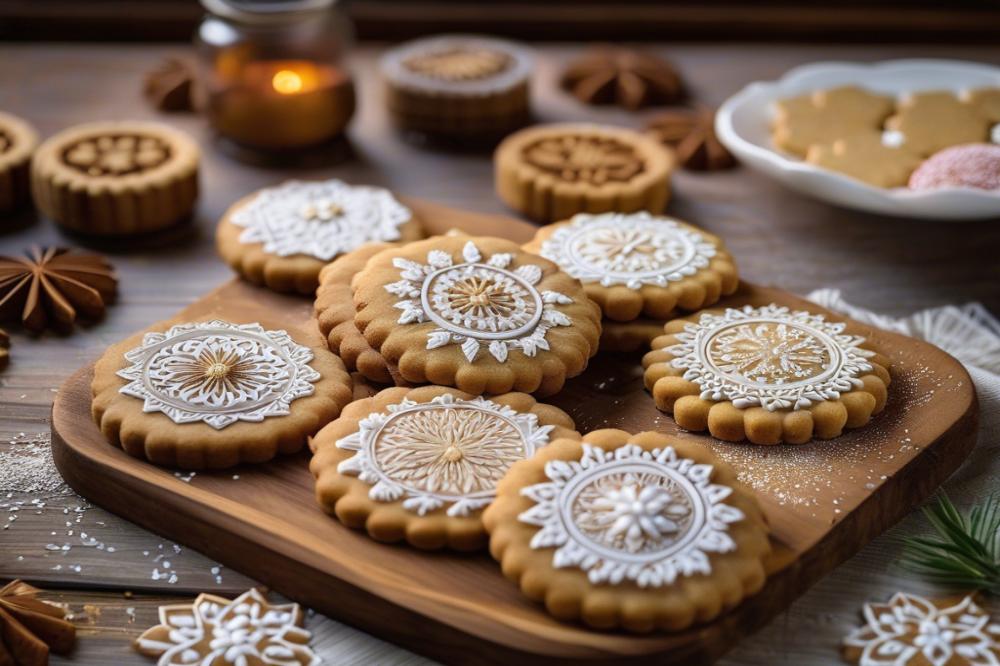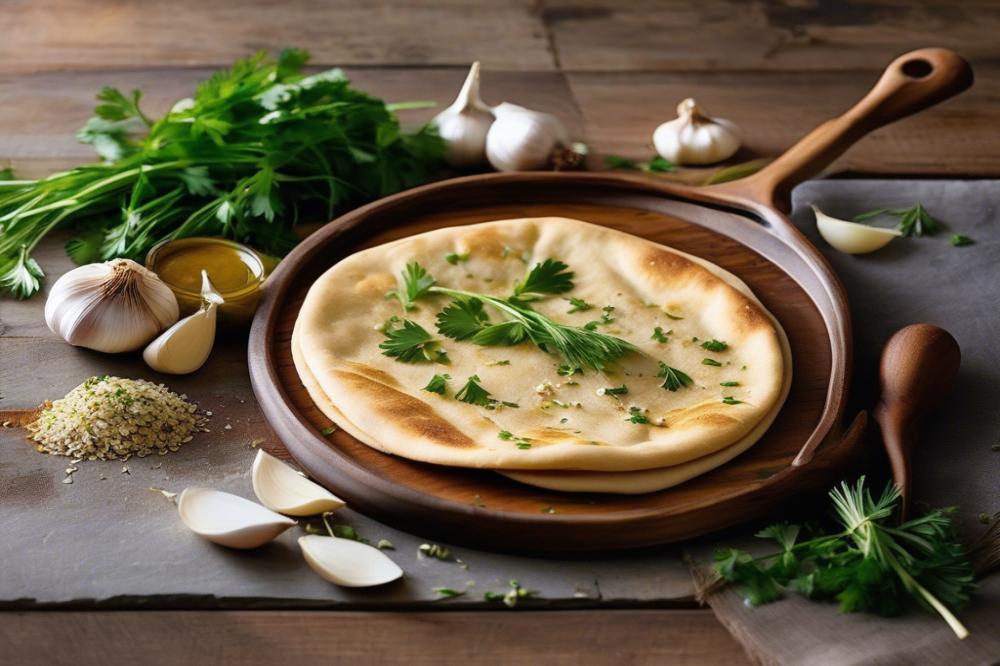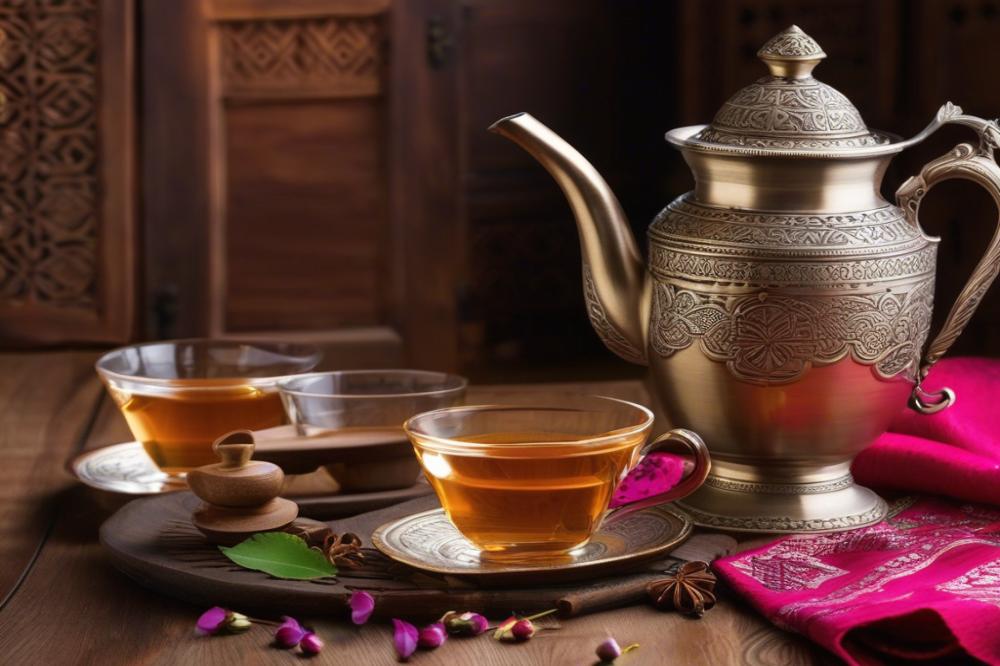Introduction
In the vibrant world of Lebanese desserts, few sweets evoke as much warmth and nostalgia as Ma’amoul. These delightful cookies are more than just treats; they represent a deep-rooted tradition in Middle Eastern cuisine. Typically filled with a rich blend of nuts or sweet dates, these pastries are shaped into intricate designs, reflecting a time-honored craft passed down through generations.
The historical significance of Ma’amoul is woven into the fabric of Lebanese culture. Originating from a medieval recipe, these cookies have been enjoyed by families for centuries. Their preparation often brings people together, making the act of baking a cherished experience. Families pass down methods, ensuring each batch carries a piece of history.
During celebrations like Eid, Ma’amoul cookies hold a special place at the table. These sweet pastries symbolically represent joy and festivity, adorning feasts and gatherings. Sharing these cookies with loved ones fosters a sense of community and connection, making them much more than mere desserts. With their nut and date fillings, these cookies are a sweet reminder of heritage and joy, bridging the past with the present.
Lebanese Ma’amoul Cookies
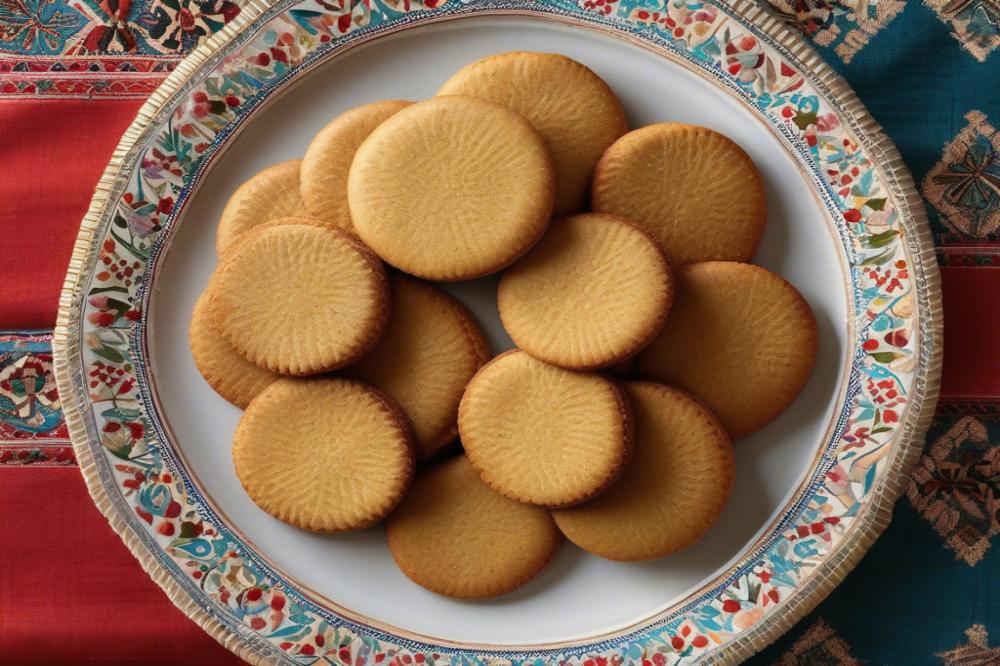
Ma’amoul are delicious, traditional cookies that have a special place in Lebanese culture. They are small, often shaped like a dome or a flower. These sweet pastries are typically made with semolina or flour. The texture is crumbly yet tender. Each bite melts in your mouth, revealing a flavorful filling inside.
Definition and characteristics of Ma’amoul
These cookies are more than just a tasty treat; they are a reflection of rich baking traditions. Ma’amoul are usually served at festive times, especially during religious celebrations. The delicate flavors and unique shapes make them stand out among other Lebanese desserts. It is common to find intricate patterns pressed into the dough, created with special molds. The appearance adds to their charm, while the taste keeps everyone coming back for more.
Types of fillings: nut filling and date filling
Inside each cookie, you can often find two main types of fillings. Nut filling is quite popular, typically made from walnuts, pistachios, or almonds. This mixture often includes spices like cinnamon, which add warmth to the flavor. On the other hand, date filling offers a natural sweetness that complements the dough beautifully. Both options provide unique tastes, appealing to various palates. Some might even enjoy trying both types in one batch.
Cultural significance as a traditional sweet pastry
During Eid and other festivities, these cookies are a must-have. Families often gather to make Ma’amoul together, passing down this medieval recipe through generations. The act of baking becomes a cherished tradition, creating bonds among family members. Serving these cookies during celebrations symbolizes hospitality and joy. Sharing Ma’amoul with friends and relatives expands the pleasure of the occasion. In many homes, you will find these cookies prepared with love, emphasizing their importance in Middle Eastern cuisine.
Ingredients and Quantities
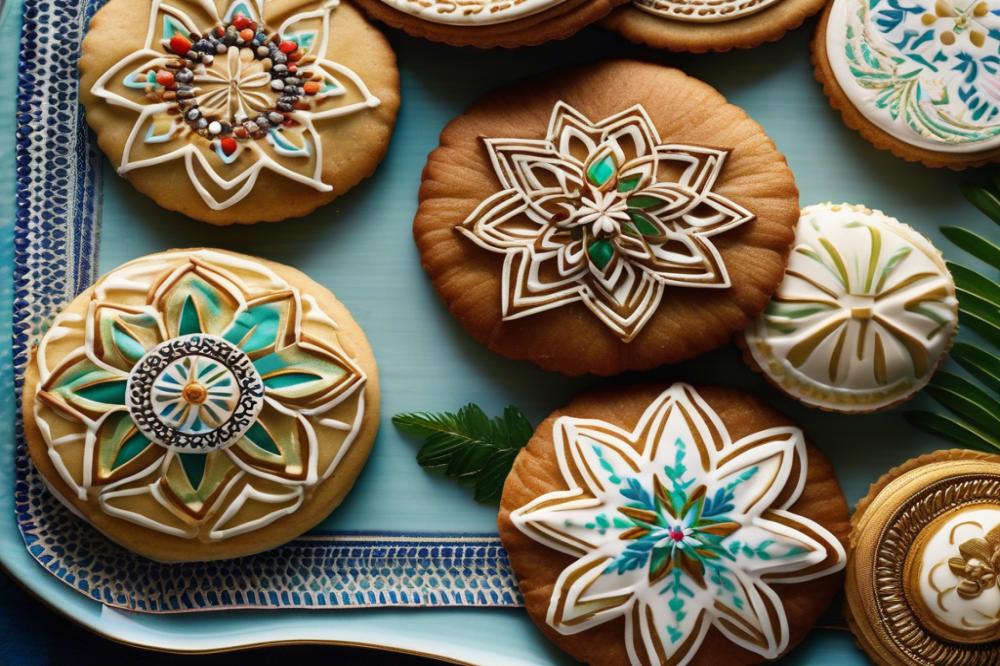
To create authentic Ma’amoul, gathering the right ingredients is essential. A classic recipe typically features a balanced mix of basic components and flavorful fillings. The main ingredients include:
- 2 cups of all-purpose flour: This forms the base of the cookie. It provides structure and is key to achieving a light texture.
- 1 cup of ghee: This clarified butter adds richness and a distinct flavor. It enhances the sweet pastry’s tenderness.
- 1/2 cup of sugar: A necessary sweetener, which balances the cookies’ richness. It also gives a hint of sweetness to the dough.
When it comes to the fillings, nut and date options are traditional. For the nut filling:
- 1 cup of finely chopped walnuts or almonds: These nuts provide crunch and a robust flavor, essential for the filling.
- 1/4 cup of sugar: This adds sweetness, making the nut filling more delectable.
- 1 teaspoon of ground cinnamon: This warm spice enhances the nut filling’s aroma, creating a comforting sensation.
For the date filling, consider using:
- 1 cup of pitted dates: They are naturally sweet and provide a sticky texture, ideal for filling.
- 1 tablespoon of orange blossom water: A splash of this floral essence offers a fragrant twist to the filling.
Understanding the nutritional content of each ingredient can enhance appreciation for Ma’amoul. Here’s a brief overview:
- Flour: About 455 calories, 1.2g fat, 13g protein, and 95g carbohydrates per cup. It is mainly responsible for carbs in the cookies.
- Ghee: Contains around 900 calories with 100g of fat per cup. This ingredient brings in richness but is higher in fat content.
- Sugar: Roughly 775 calories and 200g of carbohydrates per cup. While it adds sweetness, excess should be monitored.
- Walnuts: Approximately 654 calories, with 65g of fat and 15g of protein per cup. They are a nutritious nut choice.
- Almonds: For a similar quantity, expect around 700 calories, 60g fat, and 26g of protein. They also contain healthy nutrients.
- Pitted dates: Provide about 277 calories, 0.2g fat, and 75g of carbohydrates per cup. They are a natural sweetener.
When preparing to bake these delicious Lebanese desserts, each element plays a vital role. Choosing high-quality ingredients will elevate the final result. Ma’amoul cookies are best enjoyed fresh, making these quantities work well for gatherings or special occasions like Eid.
Method and Cooking Instructions
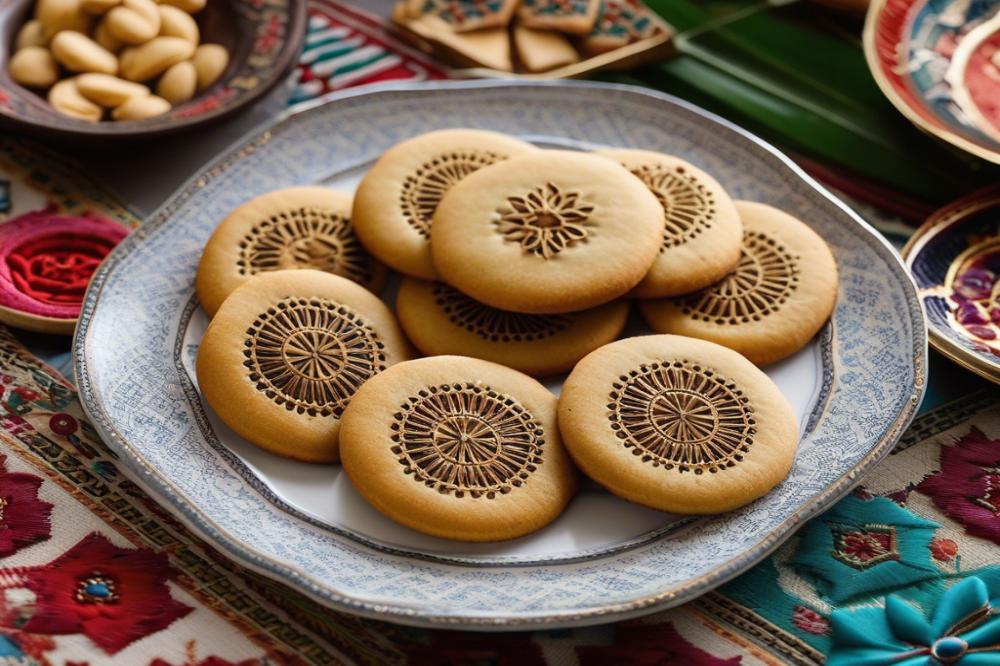
Step-by-step guide on how to prepare and bake Lebanese Ma’amoul Cookies
Start by measuring two and a quarter cups of all-purpose flour. In a large mixing bowl, add this flour along with one cup of semolina. Mix them together until well combined. Next, melt a half cup of unsalted butter. Once melted, pour the butter into the flour mixture. Stir in one cup of milk and one tablespoon of rose water. Combine these ingredients until they form a dough.
Kneading comes next. Do this gently on a floured surface until the dough becomes smooth and soft. If the dough feels too sticky, sprinkle a little more flour as you work. Let it rest for about thirty minutes. This helps the flavors meld together and the dough to relax.
While the dough rests, it’s time to prepare the filling. Choose between nut filling or date filling based on your preference. For the nut filling, finely chop walnuts or pistachios, and mix them with sugar and cinnamon. If you’re using date filling, blend pitted dates with a dash of orange blossom water.
After resting, divide the dough into small balls. Each ball should be about the size of a tablespoon. Flatten each ball in the palm of your hand. Place a spoonful of filling in the center. Carefully fold the dough over the filling, pinching the edges to seal it well. Shape the filled dough into smooth balls or use a mold for a decorative touch.
Tips for achieving the perfect dough consistency and filling technique
Pay attention to the dough’s consistency. It should be pliable but not too sticky. If your dough crumbles, add a little more melted butter. This will improve the texture. When filling, don’t overstuff them, or the cookies might burst open while baking.
Molding is an art. Use wooden molds if you have them. They add a traditional look to your cookies. Gently press the dough into the mold, and then flip it out onto the baking tray. This ensures a beautiful pattern on each cookie.
Baking time and temperature settings
Preheat your oven to 350°F (175°C). Arrange the cookies on a baking sheet lined with parchment paper. Bake them for about 20 to 25 minutes. They should turn a light golden color. Watch them closely to avoid over-baking. Once they are done, allow them to cool on a wire rack.
Dust the finished cookies with powdered sugar for an extra touch of sweetness. The traditional Lebanese desserts are now ready to enjoy. They make a wonderful Eid dessert or a delightful treat for any occasion in the realm of Middle Eastern cuisine.
Variations of Ma’amoul
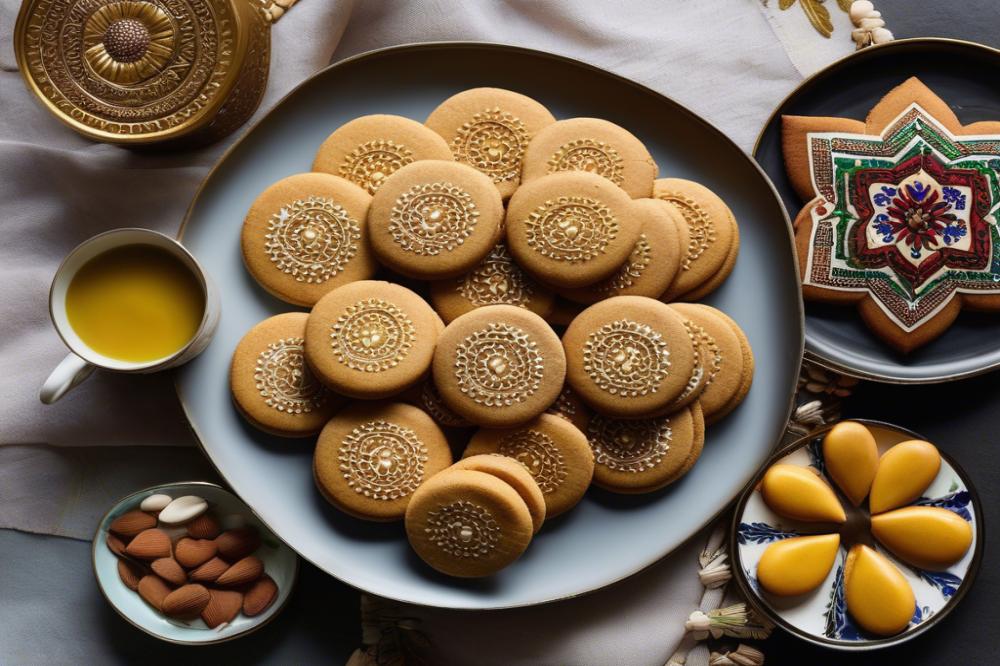
Middle Eastern cuisine showcases a rich variety in the art of baking. Each region has its own twist on traditional recipes, creating delightful adaptations. In Lebanon, Ma’amoul is typically filled with nuts or dates, but other areas expand beyond these choices. In the Land of the Cedars, pistachios and walnuts are popular, but they also incorporate almonds for unique flavor profiles.
Sweet pastries like Ma’amoul aren’t just confined to one filling. Some prefer a savory touch by adding crushed nuts or mixing them with spices. While many enjoy the classic date filling, halva has found its way into the hearts of some bakers. With the rising interest in dietary preferences, innovative methods are now prevalent.
Bakers explore creating gluten-free options for those with restrictions. Almond flour serves as an excellent substitute for traditional wheat flour. This change allows many people to enjoy these delightful cookies without worry. Rice flour has also emerged as a popular alternative, ensuring that more individuals can relish in these treats.
Celebrations such as Eid feature these cookies as part of their dessert spread. In some families, every gathering turns into a chance to try new fillings, inviting creativity into the baking process. A medieval recipe can come alive in modern kitchens with a few simple changes. Chocolate has even made its way into contemporary adaptations, finding fans among the younger generation.
Ma’amoul cookies, in essence, reflect the rich tapestry of Middle Eastern culture. Each filling tells a story, woven through generations. The act of baking not only preserves tradition but also encourages innovation. With every bite, one can taste the love and creativity behind these beautiful sweet creations.
Serving and Storing Lebanese Ma’amoul Cookies
These delightful cookies serve as perfect treats during celebrations. Festive occasions like Eid often call for a special touch, and Ma’amoul can easily fit that role. Arranging them on a decorative platter adds elegance to any gathering. They also make wonderful gifts when placed in beautiful boxes. People love to enjoy them with coffee or tea, enhancing their rich flavors.
When sharing these sweet pastries, consider mixing both nut and date fillings. Variation adds interest and showcases the iconic elements of Middle Eastern cuisine. The different tastes cater to guests’ preferences and create an inviting atmosphere. For casual settings, serve Ma’amoul during afternoon gatherings or family dinners. These cookies can brighten up a simple meal or snack time with their special texture and taste.
After baking, storing cookies properly is essential for maintaining freshness. Storing in an airtight container keeps them soft and flavorful. Placing parchment paper between layers helps prevent sticking. Cookies can last for one to two weeks, but be careful not to leave them exposed to air. For longer storage, freezing works well. Wrap each cookie in plastic and then place them in a freezer bag. This method preserves their delightful taste.
While it is tempting to make a large batch, moderation is key when displaying these Lebanese desserts. Over time, cookies may lose texture if not consumed right away. Baking a batch ahead of time is a wise idea. This medieval recipe can come in handy for unexpected visitors. Simply pull them out and serve when needed to impress effortlessly.
Final Thoughts on Ma’amoul Cookies
The cultural significance of Ma’amoul cookies extends beyond their delightful flavors. These treats are often made during festivals and family gatherings, embodying the spirit of celebration and togetherness. Sharing them during holidays like Eid and Easter unites loved ones and strengthens bonds. Each bite carries history, tradition, and a taste of the past.
Trying this traditional recipe offers an opportunity to connect with Lebanon’s rich culinary heritage. Engaging in the process of making these cookies can be a rewarding experience. Whether gathering ingredients or rolling out dough, every step becomes a small celebration. The fragrant aromas that fill your kitchen will surely invite smiles from family and friends.
Ultimately, Ma’amoul cookies represent joy and generosity. Baking these treats creates moments to cherish, as they are not just desserts but symbols of hospitality and warmth. Encourage your family to participate in the baking process. Enjoying these cookies together makes every bite even sweeter, and memories are born in the kitchen.

